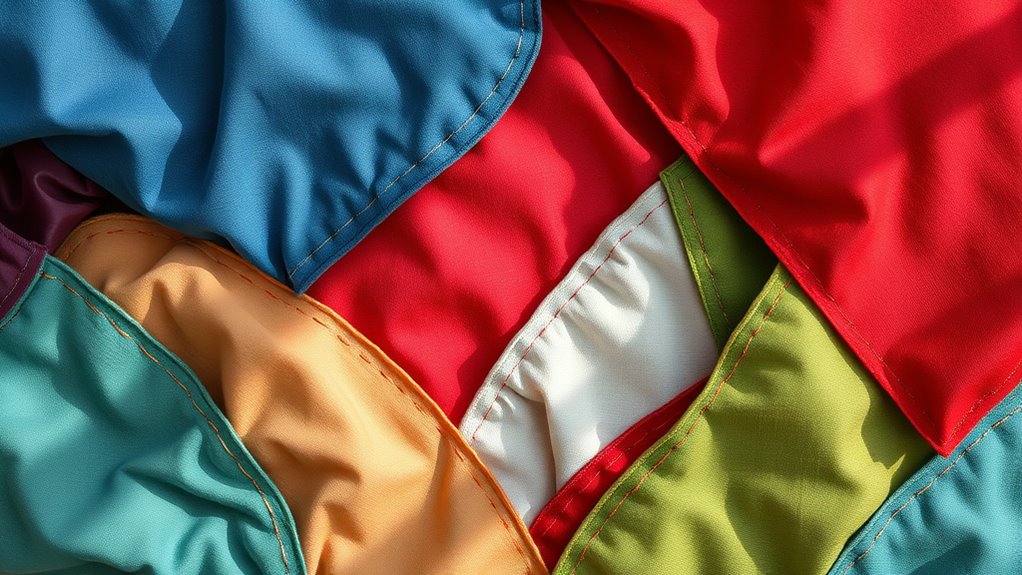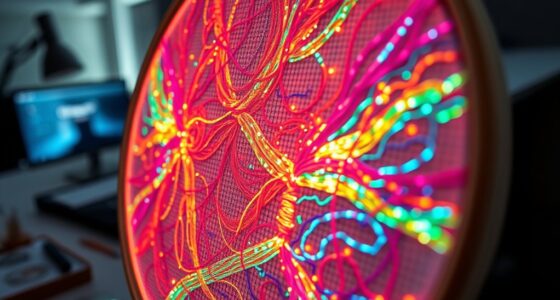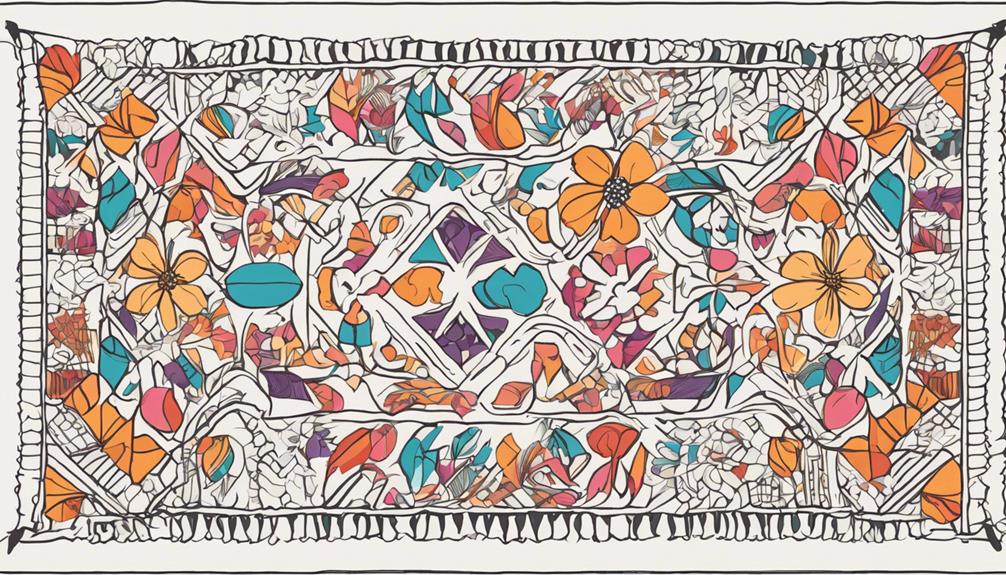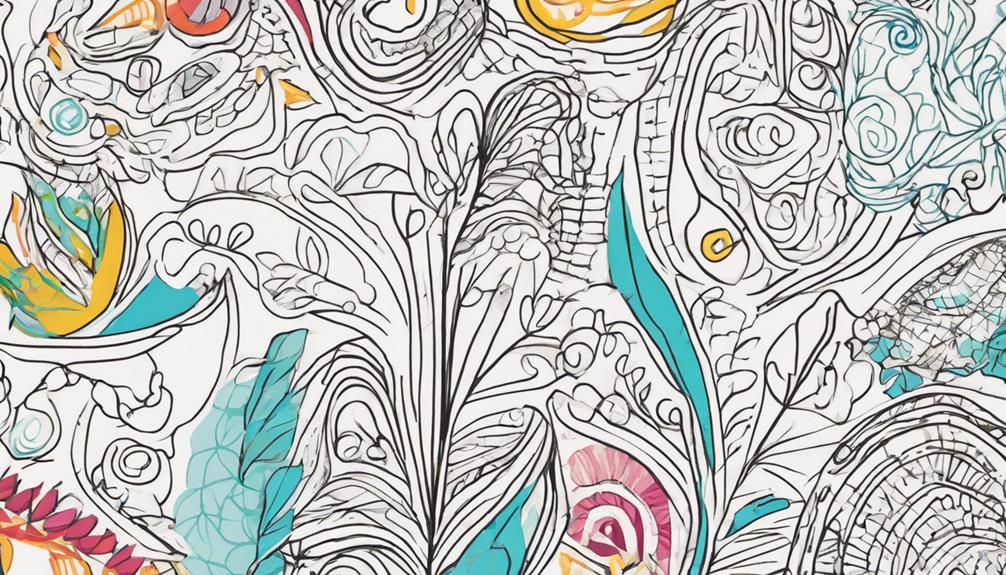Colors in textile art can influence your emotions and well-being by evoking feelings like calmness or energy. While hues like blue and green might soothe, reds and yellows can boost vitality. Cultural meanings add depth to how you interpret these colors’ effects. Though color alone doesn’t heal, understanding its emotional and cultural significance can enhance your experience and connection to the artwork. Exploring more reveals how color intentionally shapes your perception and mood.
Key Takeaways
- Colors in textile art evoke emotional responses that can promote relaxation, energy, or comfort, contributing to perceived healing effects.
- Cultural symbolism of hues enhances their psychological impact, influencing how textiles support emotional well-being.
- Artists intentionally select colors to convey healing themes or evoke specific feelings in viewers.
- Color symbolism in textiles can facilitate emotional expression and serve as a form of therapeutic communication.
- While hues influence mood, their healing properties are subjective and depend on cultural context and individual perception.

Color plays a powerful role in textile art, influencing how viewers feel and interpret a piece. When you look at a tapestry, quilt, or woven fabric, the colors immediately evoke emotions—whether it’s calmness from soft blues or energy from fiery reds. These emotional impacts aren’t accidental; they’re rooted in deep-seated cultural influences that shape how certain hues are perceived. For example, in many Western cultures, white often symbolizes purity, while in some Eastern traditions, it can represent mourning. Recognizing these cultural influences allows you to better understand why a textile might resonate differently with diverse audiences. The emotional impact of color in textile art isn’t just a matter of personal preference; it’s intertwined with collective histories and shared meanings. Artists intentionally select colors to evoke specific feelings or to convey cultural stories, making the textile a vessel of emotional communication. The colors chosen can amplify a piece’s narrative, creating a visual language that transcends words.
In many cultures, vibrant reds and golds are associated with celebration and prosperity, so their presence in textile art can evoke feelings of joy, wealth, or spiritual significance. Conversely, muted earth tones might evoke a sense of grounding or connection to nature, reflecting cultural reverence for the land. When you engage with textile art, you’re not just observing a collection of colors but experiencing a cultural dialogue embedded within the fabric. Artists often draw on these cultural influences to communicate specific themes or evoke shared memories. They understand that certain hues can trigger emotional responses rooted in cultural symbolism, making their work more impactful and meaningful. Additionally, understanding color symbolism can deepen your appreciation for the artist’s intentions and the cultural context behind their work.
Understanding the emotional and cultural layers behind color choices enhances your appreciation of textile art. It’s not merely about aesthetics; it’s about the stories and feelings that colors carry across different societies. When you see a textile piece that uses bold, contrasting colors, think about the cultural significance behind those choices. That vibrant palette might symbolize strength and vitality in one culture, or it could serve as a protective talisman in another. Recognizing these influences helps you connect more deeply with the artwork, appreciating how color acts as a bridge between personal emotion and collective cultural identity. Ultimately, in textile art, color is a language—one that speaks directly to your emotions while rooted in cultural history, shaping your experience and understanding of the piece.
Frequently Asked Questions
Can Specific Fabric Textures Influence Emotional Responses?
You might notice that specific fabric tactile qualities can influence your emotional response. Textures like soft velvet or rough burlap evoke different feelings, impacting your emotional impact. When you choose fabrics with deliberate tactile qualities, you shape the vibe of a space or piece, making it more calming, energizing, or comforting. So, yes, fabric textures can profoundly influence your emotional reactions, enhancing your overall experience with textile art.
Do Cultural Differences Affect Color Perceptions in Textile Art?
You should consider how cultural differences influence color perceptions in textile art. Cultural symbolism and regional color meanings shape how you interpret hues; what feels calming in one culture might evoke excitement or caution in another. By understanding these nuances, you can create textile pieces that resonate deeply with diverse audiences, ensuring your art communicates the intended emotions and respects cultural sensitivities, making your work more impactful and meaningful.
How Long Do Color-Induced Emotional Effects Last?
Imagine each hue as a whisper of your inner strength, influencing your mood over time. The duration of color-induced emotional effects varies; some may linger for hours, while others fade quickly. Factors like color retention in textiles and your emotional resilience shape this experience. You can harness vibrant shades to boost confidence or calming tones to soothe, but remember, your emotional response’s longevity depends on your personal connection and resilience.
Are There Any Risks Associated With Using Certain Colors for Therapy?
You might wonder if using certain colors for therapy poses risks. Excessive color overload can lead to emotional desensitization, where your reactions become dulled over time. Some hues might trigger unwanted feelings or anxiety if misused. It is crucial to use colors thoughtfully and consult with professionals to avoid these risks, ensuring your emotional well-being remains balanced and protected during color therapy.
Can Color Therapy in Textile Art Replace Conventional Mental Health Treatments?
Imagine a world where colors hold untapped power—can color therapy in textile art truly replace conventional mental health treatments? While therapeutic fabrics and color symbolism offer calming effects, they aren’t a substitute for professional care. You might find comfort in vibrant hues, but relying solely on these methods risks overlooking essential therapeutic interventions. Embrace them as complementary tools rather than complete replacements for proven mental health treatments.
Conclusion
As you explore the vibrant world of textile art, remember that colors are more than just shades—they’re powerful tools for healing and expression. Do hues truly have the power to impact your well-being? Think of them as silent storytellers, whispering emotions and calming minds. So next time you choose a color for your creation, consider its unseen magic. After all, in the tapestry of life, every hue has a story worth telling—are you ready to listen?










